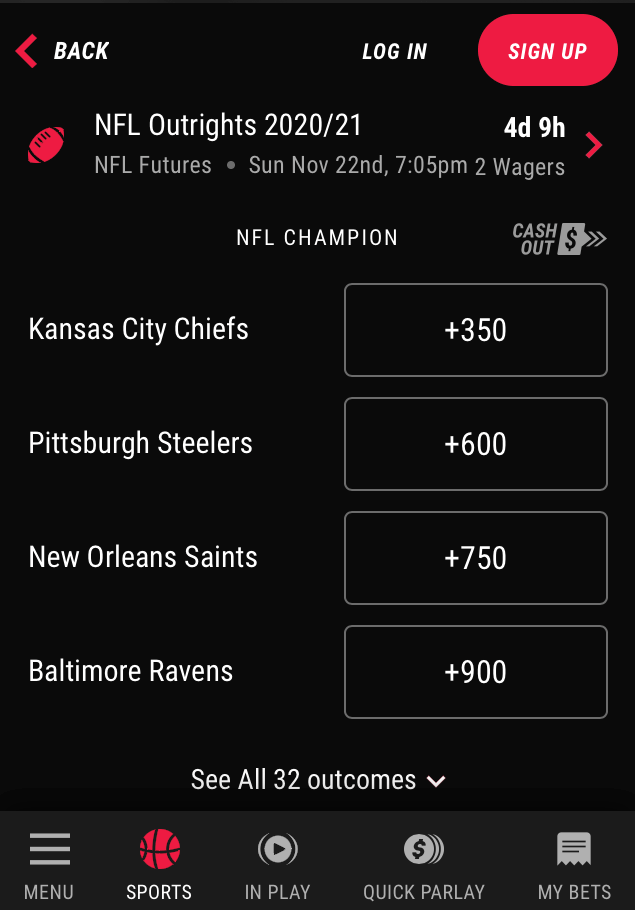- Understanding Betting Lines
- Understanding Betting Lines Nfl
- Sports Betting Odds
- What Are Betting Lines
- Understanding Betting Lines And Odds
There are two ways odds – or prices – are displayed at racecourses in Britain: the traditional fractional system or the more recently introduced decimal system.
Understanding betting odds is key to enjoying the experience of betting online and essential to learn before you start placing a bet online. We’ll go through the various kinds of gambling odds new players might see as they flick through the various online providers, detailing how to understand betting odds, the pillars of how sports betting. Sports Betting Odds Explained. For the novice sports bettor, understanding how sports betting odds work can be one of the most confusing sets of numbers you've ever dealt with. For those who have just started betting on sports, to know how the odds work is of key importance for a profitable and enjoyable betting experience. This is the horse most likely to win, which is reflected in having the shortest price displayed with betting operators. You will see an F alongside the horse’s odds when they are the favourite. If more than one horse has the same odds of winning according to the betting market, this will be displayed as JF, meaning joint-favourite.
Fractional odds:

Understanding Betting Lines
Sports betting would be easy — or maybe just easier — if all that was required was to correctly pick the winning team. Gambling institutions, sportsbooks and bookies fall back on point spreads to make the process a little more difficult and to create the ultimate wagering challenge. So if you wager $120 on a -120 betting line and win, you get your initial $120 back plus an additional $100. The plus odds reflect what you would win from a $100 wager, so winning a $100 bet on a +120 line would get your $100 wager back plus $120 in winnings. How to Read a Point Spread. Point spreads are a way to keep betting lines close even.
These are usually displayed in this format: 4/1.
In spoken form this is “Four-to-one” and sometimes this can be written as: 4-1.
Odds are just maths. To illustrate some examples, let’s call each number a unit. So:
4/1: For every 1 unit you stake, you will receive 4 units if you win (plus your stake).
7/2: For every 2 units you stake, you will receive 7 units if you win (plus your stake).
9/4: For every 4 units you stake, you will receive 9 units if you win (plus your stake).
If you see fractional odds the other way round – such as 1/4 – this is called odds-on and means the horse in question is a hot favourite to win the race.

In spoken form this is “Four-to-one on”.
1/4: For every 4 units you stake, you will receive 1 unit if you win (plus your stake).
1/2: For every 2 units you stake, you will receive 1 unit if you win (plus your stake).
Sometimes you will see Evens or EVS displayed. This is the equivalent of a 1/1 fraction. Again it means the horse in question is expected to win the race.
Understanding Betting Lines Nfl
EVS: For every 1 unit you stake, you will receive 1 unit if you win (plus your stake).
Decimal odds:
These are usually displayed in this format: 5.00.
5.00: Simply multiply this number by your stake to calculate your total potential returns if you are placing a win bet. Unlike fractional odds, your stake is already factored into this price i.e. this is the equivalent of 4/1 plus the 1 unit you stake.
Favourites:
Each race has a favourite. This is the horse most likely to win, which is reflected in having the shortest price displayed with betting operators.
You will see an F alongside the horse’s odds when they are the favourite. If more than one horse has the same odds of winning according to the betting market, this will be displayed as JF, meaning joint-favourite.
What about odds when betting each-way?
Racecourse bookmakers operating at Jockey Club Racecourses must meet (or exceed in the customer’s favour) a standard set of terms if you decide to place an each-way bet.
You will appreciate it is not affordable for bookmakers to pay out on all four places in a four runner race (!) so these agreed terms concerning place part of your each-way bet have to vary dependent on the number of runners and type of race. These are:
• Races with 3 or runners: win bets only, unless the bookmaker chooses to offer 1/5 (one fifth) of the stated odds for finishing 1st or 2nd
• Races with 3 or 4 runners: 1/5 (one fifth) of the stated odds for finishing 1st or 2nd
• Races with 5 to 7 runners (inclusive): 1/4 (one quarter) odds for finishing 1st or 2nd
• Races with 8 or more runners: 1/5 odds for finishing 1st, 2nd or 3rd
• Handicap races with 12 to 15 runners (inclusive): 1/4 odds for finishing 1st, 2nd or 3rd
• Handicap races with 16 to 21 runners (inclusive): 1/5 odds for finishing 1st, 2nd, 3rd or 4th
• Handicap races with 22 or more runners: 1/4 odds for finishing 1st, 2nd, 3rd and 4th
